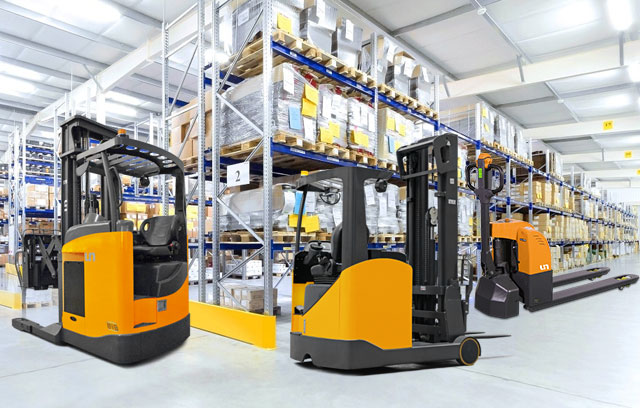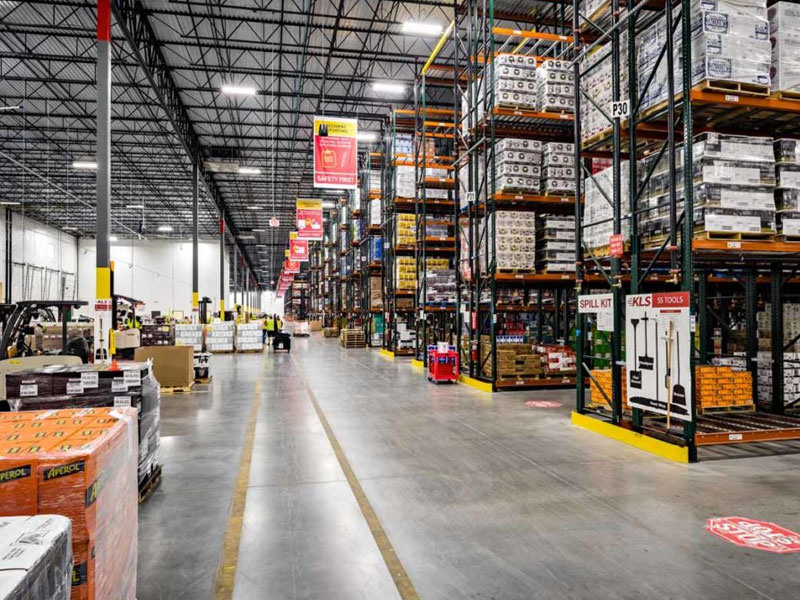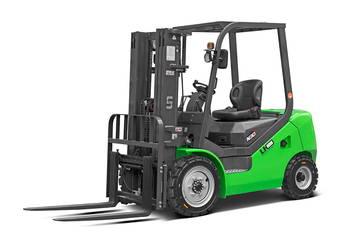Environmental protection differences between electric forklifts and traditional fuel forklifts
With the improvement of global environmental awareness, the environmental protection requirements of various industrial equipment are gradually increasing. As an indispensable and important equipment in the logistics and warehousing industry, the environmental protection of forklifts is crucial to the sustainable development of enterprises. In the forklift industry, there are significant differences in the environmental protection of electric forklifts and traditional fuel forklifts. Electric forklifts are considered to be a more environmentally friendly choice, but its advantages are not absolute. The following will analyze the environmental protection performance of electric forklifts compared with traditional fuel forklifts from multiple dimensions.
Emission pollution comparison
Traditional fuel forklifts use internal combustion engines as power sources, and the combustion process of fuel will produce a certain amount of harmful gases, including carbon dioxide (CO2), nitrogen oxides (NOx), hydrocarbons (HC) and particulate matter (PM). These exhaust gases will not only cause air pollution to the operating environment, but also bring certain risks to the health of operators, especially in closed warehouses or workplaces.
In contrast, the drive system of electric forklifts relies entirely on electrical energy and does not produce tail gas emissions. Therefore, the impact of electric forklifts on air quality in daily operations is almost zero. At this point, electric forklifts obviously have obvious environmental advantages.
Energy consumption and carbon emissions
Traditional fuel forklifts usually use gasoline or diesel as energy, which are fossil fuels. During combustion, a large amount of carbon dioxide (CO2) is released, exacerbating the greenhouse effect. Electric forklifts use batteries as a power source. Although electric forklifts themselves do not directly emit harmful gases, their environmental friendliness is closely related to the source of electricity. If the electricity comes from coal or other heavily polluting energy sources, the indirect carbon emissions of electric forklifts cannot be ignored.
With the transformation of the global energy structure, especially the gradual increase in the proportion of renewable energy (such as solar energy and wind energy), the overall carbon emission level of electric forklifts is expected to continue to decline. In contrast, the carbon emissions of traditional fuel forklifts still rely heavily on the use of fossil fuels, and it is difficult to achieve a complete reduction.
Noise pollution
The internal combustion engine of a fuel forklift will make a lot of noise when working, especially when it is under high load or acceleration, the noise level often exceeds 85 decibels, and long-term exposure to this noise environment may affect the hearing health of the operator. In addition, the interference of noise pollution to the surrounding environment and other staff cannot be ignored.
Electric forklifts operate relatively quietly. Since electric forklifts do not have internal combustion engines, the motors produce almost no noise when working, and there is only the friction sound when the tires come into contact with the ground. This makes electric forklifts an ideal choice for working in low-noise environments (such as libraries, hospitals, office buildings, etc.). The low noise characteristics of electric forklifts can not only improve the comfort of the working environment, but also reduce the interference of noise to other workers.
Energy efficiency
Electric forklifts are generally more efficient than traditional fuel forklifts. In the process of converting fuel into mechanical energy, internal combustion engines will waste energy due to friction, heat loss, etc. Electric forklifts convert electrical energy into driving force through batteries, and relatively speaking, electric motors are more efficient. The battery charging efficiency of electric forklifts is high, which can convert most of the electrical energy into driving force and reduce energy waste.
When decelerating, electric forklifts can convert kinetic energy into electrical energy through the regenerative braking system and store it in the battery. This process helps to improve the overall energy efficiency. In contrast, traditional fuel forklifts cannot achieve this, so their energy efficiency is relatively low.
Greenhouse gas emissions
Greenhouse gases are the main factor causing climate change, and carbon dioxide (CO2) is the most important one among greenhouse gases. Traditional fuel forklifts emit carbon dioxide directly into the atmosphere due to the combustion of fossil fuels, while the carbon emissions of electric forklifts depend on the source of electricity. In most cases, the production process of electricity (for example, through thermal power or coal power) will lead to carbon dioxide emissions, but with the popularization of green electricity, the carbon emissions of electric forklifts are expected to be greatly reduced.
In some areas that use clean energy, such as power grids that rely on renewable energy such as wind power and solar power, the operation of electric forklifts produces almost no greenhouse gases. In power grids that rely on coal, the carbon emissions of electric forklifts are still relatively high, but overall, the greenhouse gas emissions of electric forklifts are still significantly lower than those of traditional fuel forklifts.
Waste and resource recycling
The battery of an electric forklift is an important resource, and its environmental friendliness depends to a certain extent on the production and recycling of batteries. Existing battery recycling technology is relatively mature, especially lithium batteries, which are more environmentally friendly during the recycling process. Although the battery manufacturing process still consumes certain resources and produces certain pollution, the reuse potential of electric forklift batteries is relatively large. The scrapping of engines and other mechanical parts of traditional fuel forklifts involves more chemical substances and hazardous wastes, which is difficult to handle and causes serious environmental pollution.
Electric forklifts are relatively more environmentally friendly in terms of waste management, but the recycling and reuse of batteries still need to be considered. With the development of technology, waste treatment and resource recycling of electric forklifts may become more efficient and environmentally friendly in the future.
Overall environmental benefits
On the whole, electric forklifts are more environmentally friendly than traditional fuel forklifts. It reduces exhaust emissions, noise pollution and greenhouse gas emissions, and is more energy efficient. With the gradual popularization of renewable energy, the environmental benefits of electric forklifts will be more prominent. However, the battery production and recycling of electric forklifts still need to be further optimized to reduce their impact on the environment.
For enterprises, choosing electric forklifts is not only a responsibility for environmental protection, but also an effective way to enhance the image of corporate social responsibility. With the advancement of technology and the maturity of the market, the environmental advantages of electric forklifts will become more obvious and become an important direction for the development of the industry.











 中文简体
中文简体 عربى
عربى Español
Español














